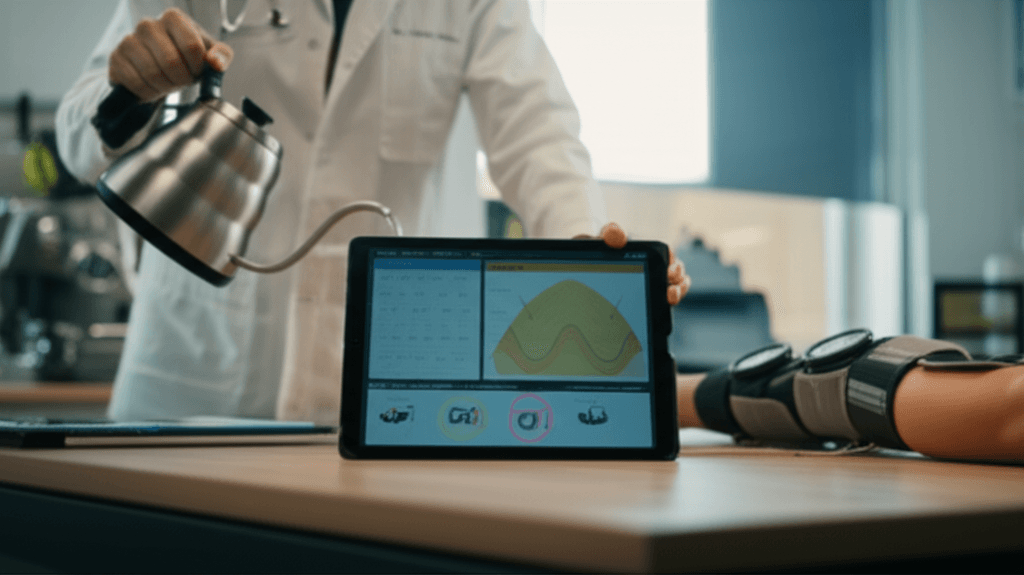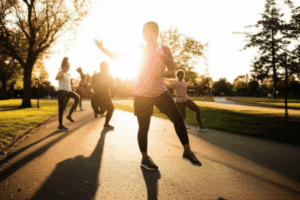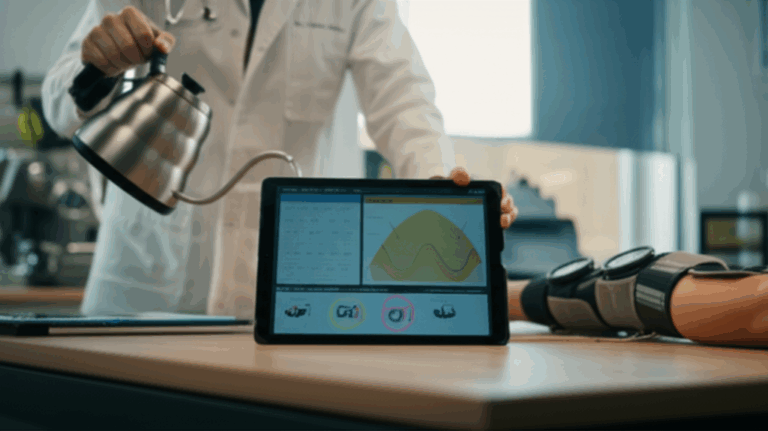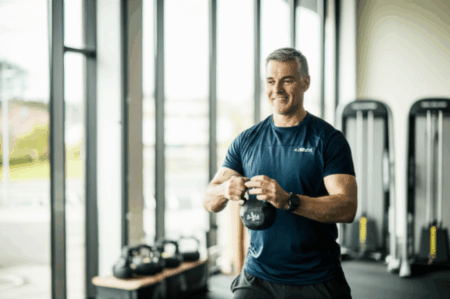Many of us relentlessly pursue fitness goals, pushing our bodies to their limits in workouts. Yet, a crucial element often gets overlooked: recovery. The truth is, the magic of muscle growth, increased strength, and improved endurance happens not during your workout, but after it, when your body is given the proper tools and environment to repair and rebuild. Prioritizing science-backed recovery strategies is essential for maximizing performance, preventing injury, and ensuring long-term fitness success.
This article will delve into the physiological processes of recovery and outline evidence-based methods to upgrade your fitness recovery routine.

Understanding the Science of Fitness Recovery
During intense exercise, your muscles experience microscopic tears (microtrauma) and your body depletes its energy stores (glycogen). The recovery period is when your body initiates a complex series of events to repair these microtears, replenish glycogen, remove metabolic waste products like lactic acid, and adapt to become stronger and more resilient. Hormones like testosterone and growth hormone play significant roles in muscle repair and tissue regeneration during this time.
Neglecting recovery can lead to decreased performance, increased susceptibility to injuries, and a state known as overtraining syndrome, characterized by chronic fatigue and persistent muscle soreness.

Pillars of Science-Backed Recovery
To truly upgrade your recovery, focus on these key areas:
1. Prioritize Quality Sleep for Muscle Repair and Regeneration
Sleep is arguably the most critical component of effective fitness recovery. During deep sleep, your body releases growth hormones vital for muscle repair and regeneration. Adequate sleep also replenishes energy stores, regulates hormones, and enhances cognitive function, all of which are essential for peak performance.
- Aim for 7-9 hours per night: Most adults need 7-9 hours of quality sleep, though high-performance athletes may require closer to 10 hours.
- Establish a consistent sleep schedule: Going to bed and waking up at the same time, even on weekends, helps regulate your circadian rhythm.
- Optimize your sleep environment: Ensure your bedroom is dark, quiet, and cool.
- Limit screen time before bed: The blue light emitted from electronic devices can interfere with melatonin production, a hormone that regulates sleep.
2. Optimize Nutrition and Hydration for Fueling and Repair
What you consume before, during, and especially after your workout significantly impacts your body’s ability to recover.
Post-Workout Nutrition
After intense workouts, your body needs specific nutrients to repair muscles and replenish glycogen stores.
- Protein: Provides amino acids, the building blocks for muscle tissue repair and growth. Aim for 20-40g of protein, or roughly 0.25–0.4 g per kilogram of body weight, within 30-60 minutes post-exercise. Good sources include eggs, lean meats, fish, Greek yogurt, cottage cheese, and protein shakes.
- Carbohydrates: Crucial for replenishing depleted glycogen stores in muscles and the liver, providing essential energy for the repair process. The harder and longer you train, the more carbohydrates you will need.
- Healthy Fats: Support hormone production and nutrient absorption. Omega-3 fatty acids, found in foods like salmon, hemp seeds, chia seeds, and avocados, can also help reduce inflammation.
- Antioxidants: Found in fruits and vegetables (e.g., blueberries, spinach, tart cherry juice), antioxidants can help reduce inflammation and oxidative stress caused by exercise.
Strategic Hydration
Adequate hydration is crucial for optimal recovery as it helps to regulate body temperature, transport nutrients to muscle cells, and remove metabolic waste products.
- Drink consistently throughout the day: Don’t wait until you’re thirsty.
- Replenish electrolytes: During and after intense exercise, especially in hot conditions, consider electrolyte-rich beverages or coconut water to replace lost minerals like sodium, potassium, calcium, and magnesium. Cow’s milk can also be an effective rehydration drink due to its fluid, protein, and carbohydrate content.
- Monitor urine color: Pale yellow indicates adequate hydration.
3. Implement Active Recovery Strategies
Contrary to popular belief, complete inactivity isn’t always the best approach. Active recovery, involving low-intensity exercise, can significantly enhance your body’s ability to recover.
- Benefits: Active recovery increases blood flow to muscles, aiding in the removal of metabolic waste products (like lactic acid) and delivering oxygen and nutrients for repair. It can reduce muscle soreness and stiffness, improve flexibility, and prepare your body for the next intense workout.
- Examples: Light aerobic activities such as walking, cycling, gentle swimming, or restorative yoga. The key is to keep the intensity low, focusing on movement and circulation rather than pushing yourself.
- Timing: Active recovery can be incorporated as a cool-down after a tough workout or on dedicated rest days.
4. Utilize Targeted Therapies for Muscle Soreness and Mobility
Several external modalities can complement your internal recovery efforts.
Stretching and Mobility Work
While static stretching might not significantly reduce immediate muscle soreness, it is crucial for improving long-term flexibility and joint health.
- Post-workout static stretching: Helps lengthen contracted muscles, ease post-workout tightness, and improve flexibility over time.
- Dynamic stretching: Studies suggest dynamic stretching can improve flexibility and performance.
- Mobility exercises: Incorporating yoga, Pilates, foam rolling, or resistance band work can help alleviate soreness, facilitate recovery, and address movement pattern issues or limited mobility.
Cold and Heat Therapy
Both cold and heat therapies can be effective for enhancing muscle recovery and reducing delayed onset muscle soreness (DOMS).
- Cold Therapy (Cryotherapy): Reduces inflammation by decreasing blood flow and numbing pain receptors. It is often recommended for acute pain or injuries, particularly within 24-48 hours after a new muscle ache, sprain, or strain, and is superior for pain relief immediately after exercise and at 24 hours.
- Heat Therapy (Thermotherapy): Promotes blood flow and helps muscles relax, which improves healing and reduces pain, especially for chronic muscle pain or stiffness. Heat application has been found superior for strength recovery immediately after exercise.
- Contrast Water Therapy: Alternating between hot and cold can significantly increase blood flow to the injury site and may be effective in reducing exercise-induced muscle damage and preventing DOMS.
Massage and Percussive Therapy
Massage can be a powerful tool for recovery, reducing muscle tension, improving circulation, and promoting relaxation.
- Benefits: Massage improves blood circulation, delivering oxygen and nutrients to muscle tissue while clearing waste products like lactic acid. It reduces stiffness, improves flexibility, and can help with pain management.
- Massage Guns: Percussive therapy devices can reduce soreness, improve flexibility, and temporarily boost strength and power in short sessions (2-8 minutes per muscle group). They are particularly effective for short-term pain relief and boosting flexibility.
5. Manage Stress Effectively
Chronic stress can significantly hinder your recovery efforts by elevating cortisol levels, which can impede muscle repair and increase injury risk.
- Relaxation techniques: Incorporate practices such as deep breathing exercises, meditation, or spending time in nature to activate the parasympathetic nervous system, promoting relaxation and aiding recovery.
- Mindfulness: Being mindful of your body’s signals and avoiding pushing through extreme pain or fatigue is crucial for effective recovery.
- Ashwagandha: This adaptogenic herb has shown potential in reducing stress and anxiety, lowering cortisol levels, and improving sleep quality, which indirectly supports recovery.
Conclusion: Recovery as a Cornerstone of Fitness
Upgrading your fitness recovery routine with science-backed methods is not a luxury but a fundamental component of achieving optimal fitness and preventing burnout. By prioritizing quality sleep, optimizing nutrition and hydration, integrating active recovery, utilizing targeted therapies, and managing stress, you empower your body’s natural healing processes. Remember, consistency in these recovery practices will enable you to adapt, grow stronger, and unlock your full athletic potential, ensuring that your hard work in the gym translates into lasting gains and overall well-being.







